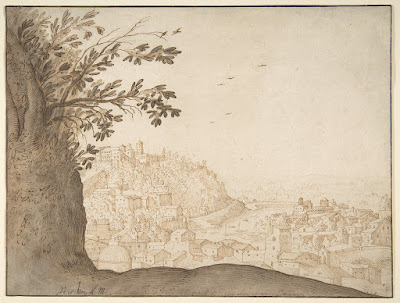 |
| Adriaen van Nieulandt the Younger Vanitas Still Life 1636 oil on panel Frans Hals Museum, Haarlem |
 |
| Adriaen van Nieulandt the Younger Diana with Nymphs 1615 oil on canvas National Trust, Ham House, London |
 |
| Adriaen van Nieulandt the Younger Prince Maurits with Horse and Groom 1624 oil on canvas Walters Art Museum, Baltimore |
 |
| attributed to Adriaen van Nieulandt the Younger Joseph sold by his Brothers before 1658 oil on panel (sketch) private collection |
 |
| Willem van Nieulandt the Younger Adoration of the Magi ca. 1610-20 oil on panel Royal Castle, Warsaw |
 |
| Willem van Nieulandt the Younger Rebecca and Eleazar 1632 oil on panel National Museum, Warsaw |
 |
| Willem van Nieulandt the Younger Jacob returning to Canaan 1611 oil on copper Pushkin Museum, Moscow |
 |
| Willem van Nieulandt the Younger Capriccio Landscape with Return of Tobit 1614 oil on panel National Museum, Warsaw |
 |
| Willem van Nieulandt the Younger Capriccio Landscape with the Horse Tamers ca. 1615 oil on panel National Museum, Gdansk |
 |
| Willem van Nieulandt the Younger View of the Roman Forum ca. 1610-15 oil on copper private collection |
 |
| Willem van Nieulandt the Younger The Flight into Egypt (among Roman Ruins) ca. 1601-1618 etching Philadelphia Museum of Art |
 |
| Willem van Nieulandt the Younger View of Castel Sant' Angelo, Rome ca. 1601-1618 etching Rijksmuseum, Amsterdam |
 |
| Willem van Nieulandt the Younger Roman Ruin ca. 1601-1618 etching Rijksmuseum, Amsterdam |
 |
| Willem van Nieulandt the Younger View of Rome from Monte Pincio ca. 1601-1618 etching Rijksmuseum, Amsterdam |
 |
| Willem van Nieulandt the Younger View of Rome ca. 1601-1618 drawing Metropolitan Museum of Art, New York |
Adriaen van Nieulandt the Younger (1587-1658) and Willem van Nieulandt the Younger (1584-1635) were sons of the artist Adriaen van Nieulandt the Elder, who had moved his family from Antwerp to Amsterdam in 1589 when both brothers were in their infancy. Their father's motives for resettling in Holland are thought to have been both religious (to avoid persecution as Protestants) and economic (with the Amsterdam art market of the time offering more stability). Willem trained with Roelant Savery, then studied in Rome with Paul Bril early in the new century, learning to exploit the bottomless appetite of the era for views of antique ruins and artifacts. Adriaen remained in Amsterdam, training with local artists in traditional genres of still life, portraiture and narrative. A third brother, Jacob, also became a painter, but little of his work appears to have survived.